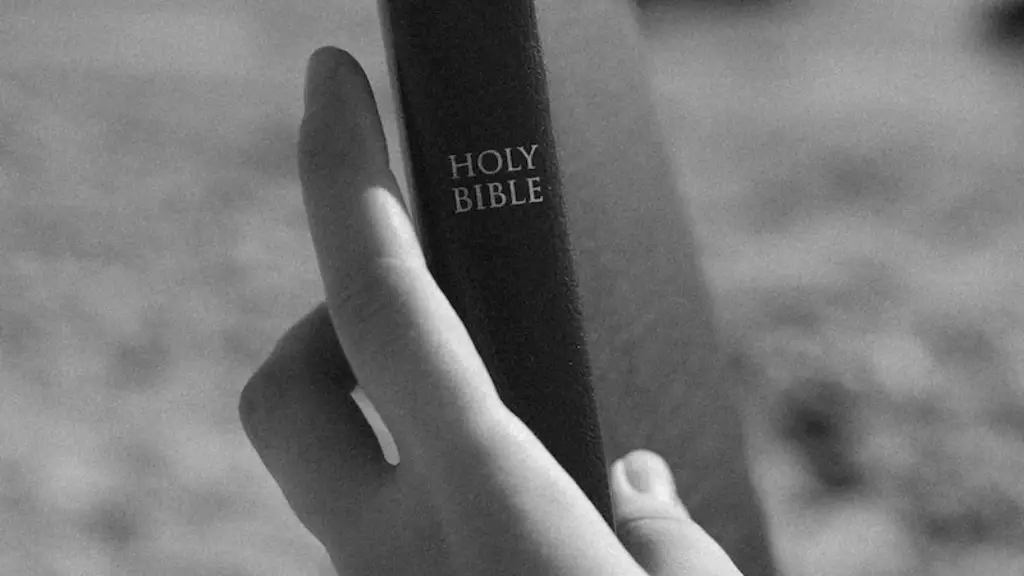The earliest Christian churches were founded on the belief in Jesus’ teachings and then around the year AD 33, His brother James organized the first Christian church council. During this council it was discussed when, how and upon whom baptism would be an important ceremony. The Bible contains a few references to baptism in several of its books, but the majority of those references appear in the New Testament. According to the New Testament, baptism is a sign of repentance and a demonstration of faith. It is an outward symbol of an inward commitment, and a demonstration of one’s belief in Jesus’ power to forgive sins.
What Is Baptism According To The Bible?
Baptism is the act of being submerged in water as an expression of faith in Jesus Christ. It symbolizes His death and resurrection, and is a part of the adoption ceremony for newcomers who join the Christian Church. The Bible does not set a specific formula for baptism, nor does it suggest a particular form or method. However, it does indicate that those who are baptized are to become members of the Church, the body of Christ, and it is seen as a sign of obedience to God’s will.
Where Is Baptism Mentioned In The Bible?
The Bible mentions baptism in several books. In the book of Matthew, Jesus has just been baptized by John the Baptist. This marks the beginning of Jesus’ public ministry and He tells followers to “go and make disciples of all nations, baptizing them in the name of the Father and of the Son and of the Holy Spirit”. This important passage is sometimes referred to as the Great Commission and is seen as a commandment from Jesus to baptize believers in the Christian faith. The book of Acts also contains several references to baptism. In Acts 2, the apostle Peter preaches a powerful sermon about the power of Jesus’ resurrection and the need for repentance. After this sermon, many of his listeners are “baptized in the name of Jesus Christ”.
The Meaning Of Baptism
The Bible also speaks of baptism as a symbol of rebirth. According to the book of Romans, those who are baptized are “buried with Christ in his death” and then “raised to a new life in Christ Jesus”. Christians believe that their sins are washed away in baptism and that they become part of the body of Christ, a new covenant people. Baptism thus marks a new beginning for the person and symbolizes a “repentance from sin” and a commitment to “follow in the footsteps of Jesus Christ”.
Baptism And The Holy Trinity
Baptism has become a central part of many Christian denominations and is a key element in worship and sacrament. In Christianity, the Holy Trinity is a reminder of the power of the triune God and is often referenced during baptism. This belief is demonstrated in the steps taken by followers of Jesus when they are baptized. They are baptized in the name of the Father, the Son, and the Holy Spirit – a reminder that these three persons of the Trinity are one.
The Liberal Protestant Perspective Of Baptism
In some liberal Protestant churches, such as the United Church of Christ, there is a broad understanding of baptism. These churches accept various forms of baptism, including sprinkling, pouring, and immersion in water. They believe that the focus of baptism should be on the inner spiritual experience of repentance and renewal, rather than the outward symbol of water. In their view, baptism is a sign of welcome and inclusion in the church, and a demonstration of faith.
Baptism In The Catholic Church
Baptism is highly important in the Catholic Church, and the Catechism, which is the official source for Catholic teaching, describes baptism as the “door to the sacraments”. It is seen as a requirement for admittance into the Church, and those who are baptized are seen as members of the Church who have a responsibility to serve, and bring the gospel message to others. According to the Catechism, baptism is “the gateway to life in the Spirit” and it is a sign to the world that the Church “is alive”.
The Changing Landscape Of Baptism
In recent years, there has been a shift in the understanding and practice of baptism. Many churches and denominations now view the ceremony as an opportunity for public witness and proclamation. In some churches, the baptized are encouraged to “go forth into the world and bring the good news”. They are challenged to become “agents of transformation” and “ambassadors for Christ.” This is a far cry from the traditional understanding of baptism, as a sign of repentance and obedience.
An Introduction To Infant Baptism
The Bible does not specify whether or not infants should be baptized, and the practice of infant baptism has had a long history within the Christian Church. The primary purpose of infant baptism is to bring a child into the community of faith and to dedicate him or her to the service of God. In some churches, only parents, sponsors, or godparents are involved in the ceremony. In others, the entire congregation pledges to help the child fulfill his or her baptismal promises.
Believer’s Baptism
Believer’s Baptism is a form of baptism that is practiced by some Christian churches. It is based on the belief that baptism should be a personal decision, made by those who have made a conscious decision to accept Jesus Christ as their savior and Lord. This type of baptism is typically reserved for those who are old enough to understand what it means to truly accept Jesus and make a profession of faith. Those who choose to be baptized in this manner are often urged to make a public statement about their beliefs and commitment to follow Jesus.
The Significance Of Baptism In Judaism
Baptism is not mentioned in the Hebrew Scriptures, or the Old Testament, and is not part of Jewish belief or practice. In the Jewish faith, a person’s faith is established by following the commandments of the Torah and living a life of repentance and prayer. Baptism is seen as a distinctly Christian practice, and many Jews view it as a form of proselytizing. However, some Jews have begun to incorporate elements of baptismal ceremonies into their own rituals, as a way of expressing solidarity with their Christian friends.
The Practice Of Baptism In Other Religions
Baptism is a central practice in Christianity, but it is also practiced by some other faiths. In Hinduism, for example, devotees bathe in the Ganges River to cleanse themselves of sin. In Islam, believers take a ritual bath in preparation for the Friday prayer. In Buddhism, the tradition of “bathing in the sacred river” is used metaphorically to describe the process of enlightenment. Though these practices may differ from Christian baptism, they all emphasize the need to purify oneself and commit to a higher spiritual path.



